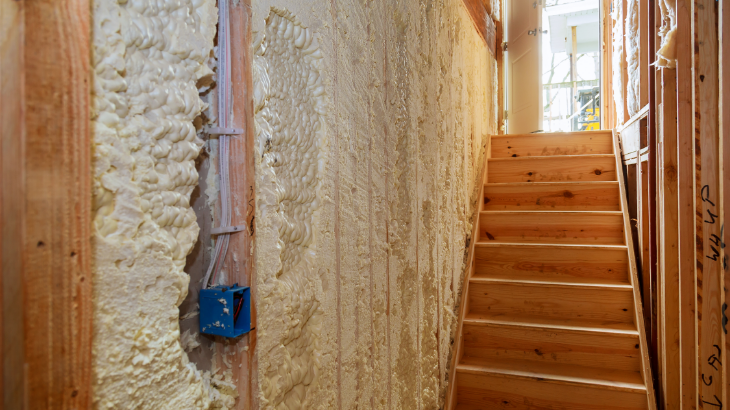
Insulation is a critical part of managing energy loss in your home because it prevents conductive heat loss. Since most buildings lose energy when heat moves from higher temperatures to lower temperatures, proper insulation is key to maintaining the comfort of your home. Insulation, when paired with air sealing, plays the same role that your favorite sweater does when paired with a jacket when you go outside on a cold day; The sweater holds the heat and the jacket keeps out the wind.
What is Insulation and How Does it Work?
Building insulation is any material that has insulating properties. This insulating property is inherent in material having small pockets of air that do not allow convection or energy transfer within the material. The most common types of building insulation are fiberglass, mineral wool, cellulose and foam products, although there are other types of insulation including wood fiber, denim, cork and foam glass.
The effectiveness of insulation materials is affected by its placement within the buildings. Most buildings have cavity insulation in between the structural elements of a building like studs, rafters and floor joists. Materials like fiberglass, cellulose and mineral wool can be installed as batts or as loose fill insulation in these cavities. Open cell and closed cell spray foams can be applied within building cavities or over surfaces like concrete walls. It should be noted that foam products, including sprayfoam and foam board must be isolated from living space due to the flammability of these products.
Some materials are applied in continuous layers that cover and isolate structural elements from heat loss. The continuous layers of insulation are much more effective than cavity insulation due to the disproportionately high levels of heat loss through the structural elements of a building. Heat loss through the framing elements can reduce the effectiveness of a building assembly by up to half of its rated insulation value. These continuous types of insulation are typically available in different types of foam, mineral wool, and wood fiber and can also provide air sealing properties.
Some of the newer options for insulating material give designers and builders more flexibility in creating high performance homes or in retrofitting existing homes. Cost, effectiveness, and suitability should all play a part in the decision making process.
How to Get Started
The NHSaves® utility partners offer three programs for all New Hampshire residents and business owners that are designed to offer assistance with installing insulation for your home or organization. For homeowners, learn more about weatherization solutions through an energy audit or the Home Energy Assistance Program. There are specific benefits and incentives for commercial customers as well, with various offerings depending on project type. Reach out today to discuss your options and get started on your journey to residential or commercial insulation.
